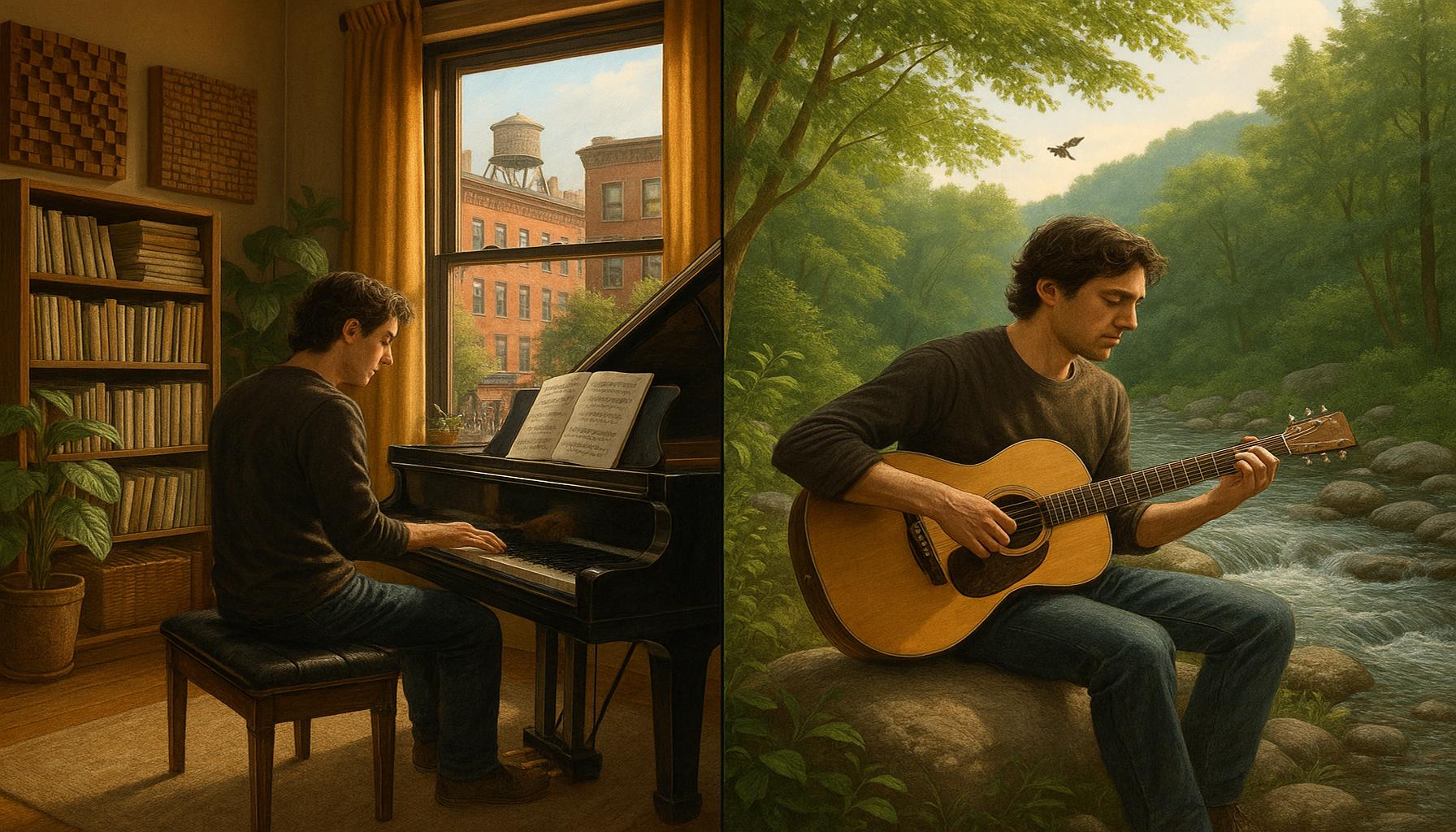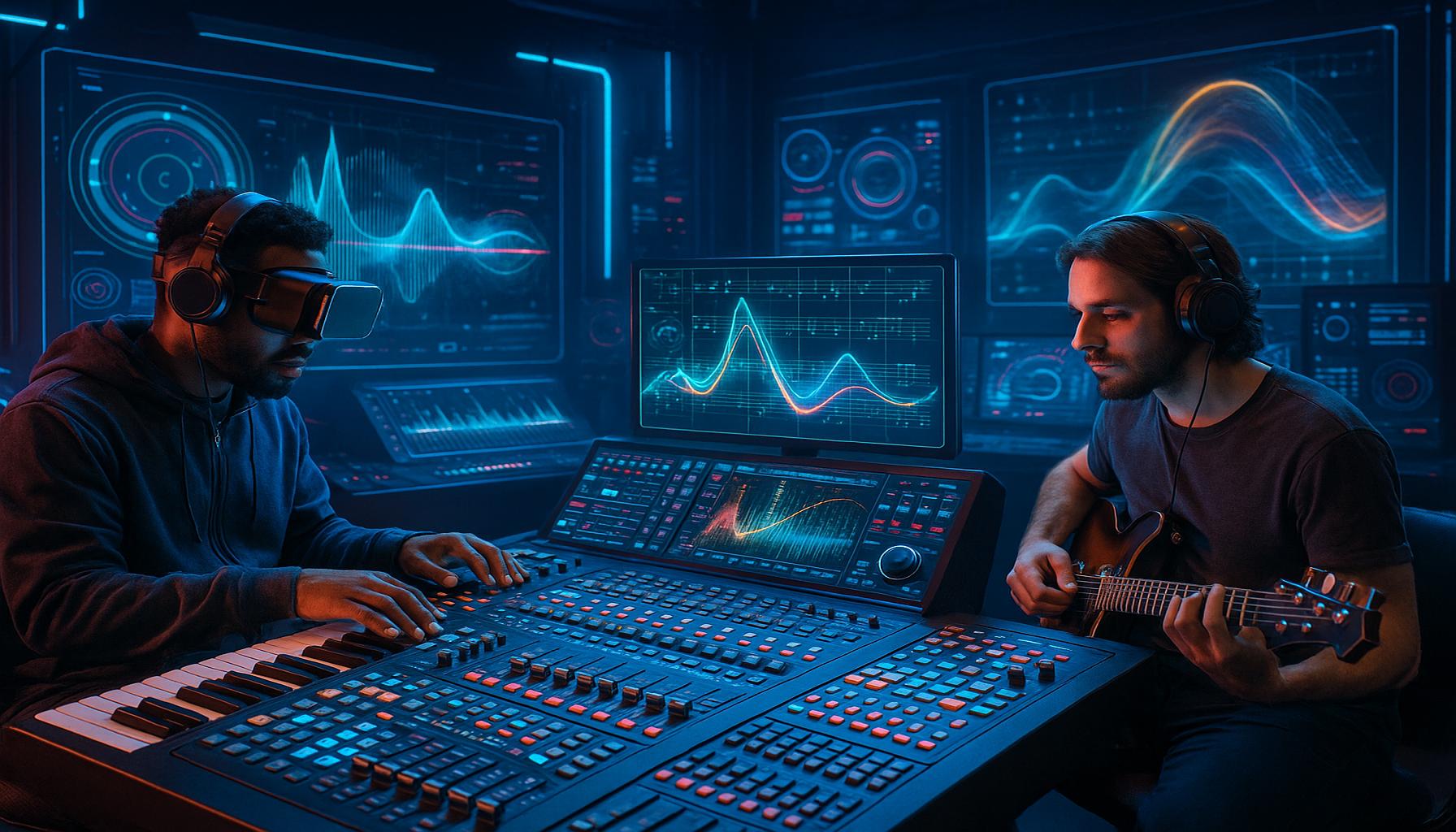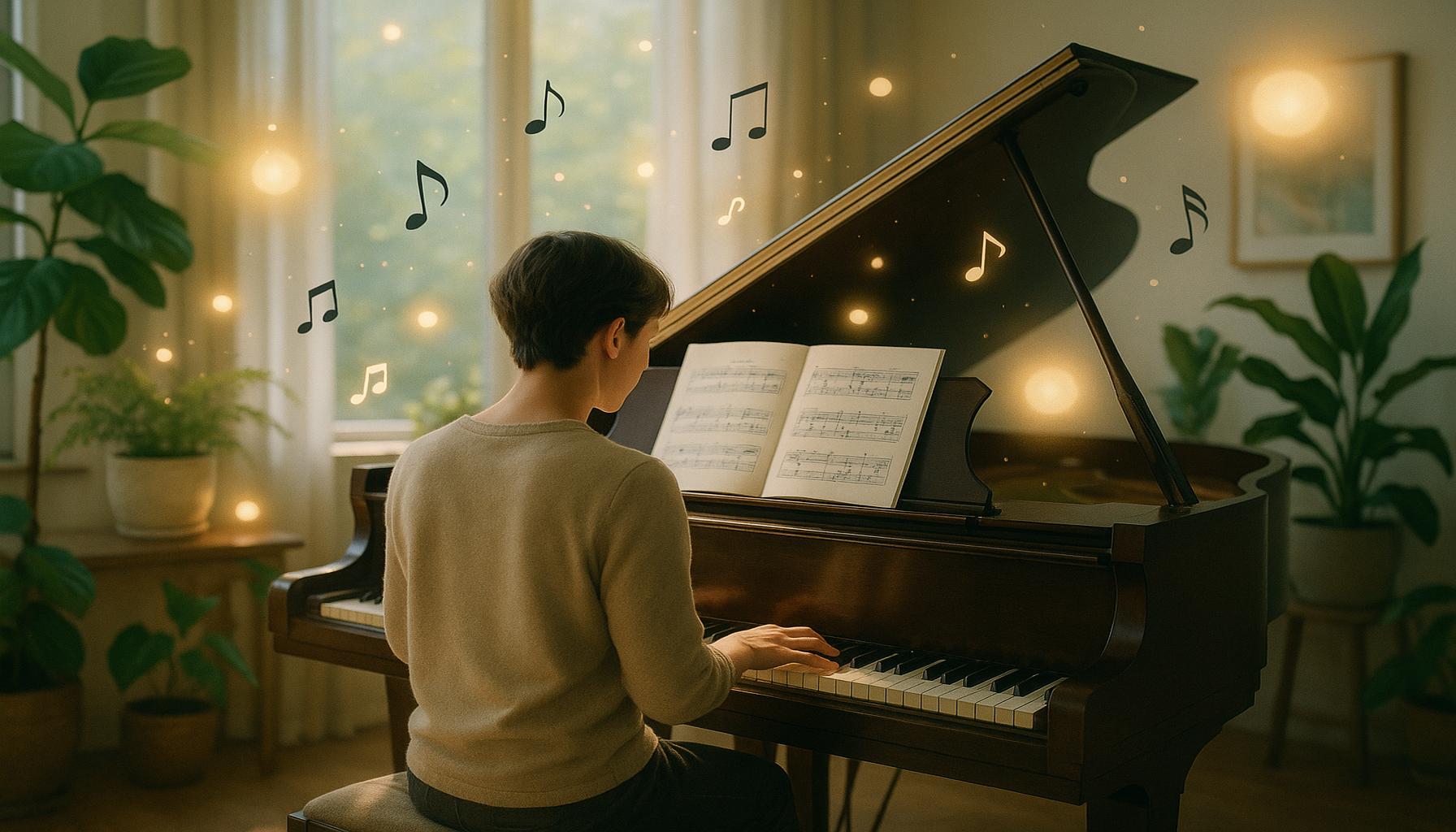Music as a Tool for Cultural Connection: The Influence of Local Genres on Composition
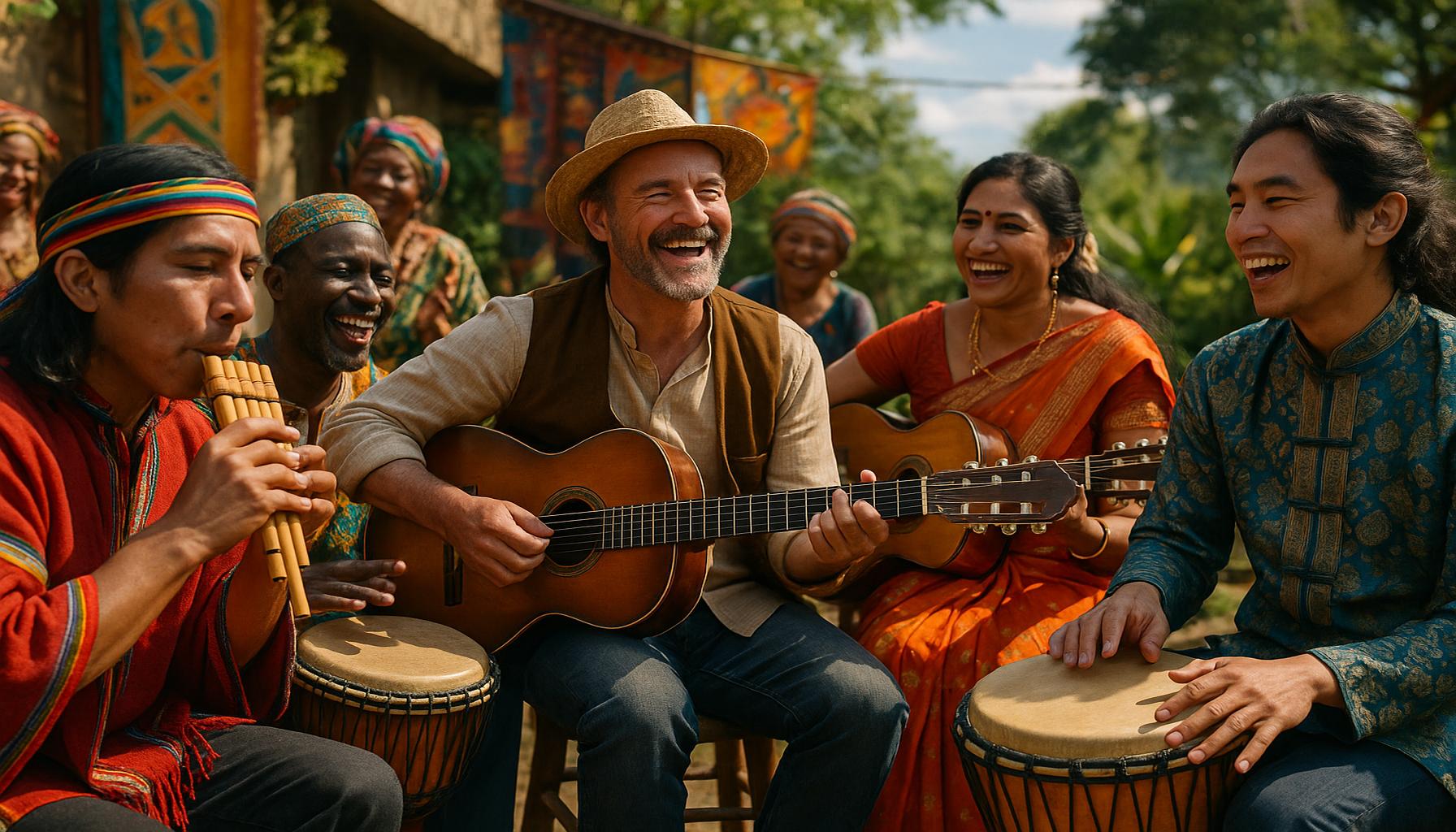
The Language of Music: A Cultural Odyssey
Music, often regarded as a universal language, holds an unparalleled power to bridge divides, fostering connections among individuals irrespective of their backgrounds. This vibrant art form resonates with human experiences and emotions, often serving as a soundtrack to our shared history. In the United States, the rich tapestry of local music genres embodies the cultural diversity of the nation, each genre encapsulating distinct narratives and identities. By delving into these influences, one can uncover the profound and intricate ties between music and cultural heritage.
Take, for instance, the genre of jazz, which originated in the bustling streets of New Orleans during the late 19th century. This genre is more than just a musical style; it is a dynamic blend of African American cultural expressions, characterized by its improvisational nature and syncopated rhythms. Artists such as Louis Armstrong and Duke Ellington not only shaped jazz but also brought African American traditions to mainstream audiences, paving the way for future musicians across various genres.
Similarly, the blues genre emerged from the Deep South as a poignant expression of the struggles faced by African Americans in a segregated society. With its soulful melodies and lyrics that reflect personal and collective pain, blues artists like B.B. King and Muddy Waters utilized this music form to speak about heartache, resilience, and hope. Their stories often resonated with those experiencing similar hardships, creating a sense of solidarity through shared emotional experiences.
On the other end of the spectrum, country music draws on folk traditions and rural life, offering narratives that mirror the everyday experiences of working-class America. Originating from Appalachian folk music, country artists like Johnny Cash and Dolly Parton have chronicled the struggles, dreams, and values of American life. Hits like “Ring of Fire” or “Jolene” highlight the power of storytelling woven into melody, capturing the essence of life in small towns across the nation.
The evolution of hip-hop, which took root in urban America during the late 1970s, further illustrates how music acts as a reflection of society. Artists such as Tupac Shakur and The Notorious B.I.G. articulated the social injustices and aspirations of their communities, turning personal experiences into anthems for the youth. Hip-hop’s influence has grown exponentially, reaching a global audience while continuing to serve as a vehicle for social commentary, empowerment, and storytelling.
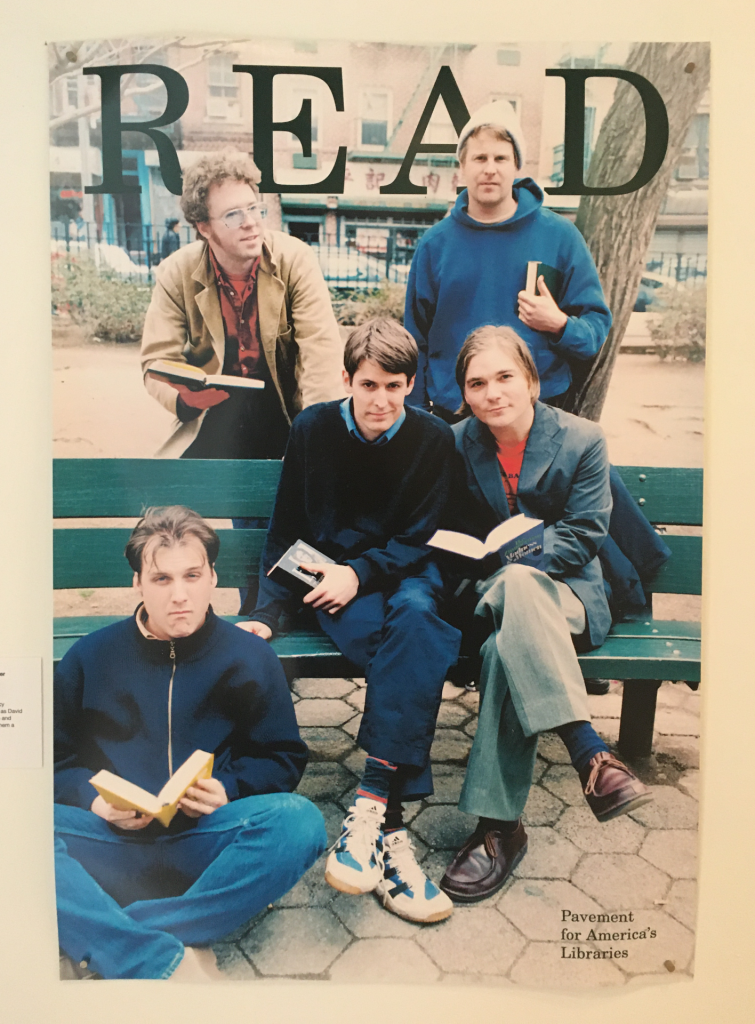
These four genres not only enrich the American musical landscape but also significantly influence contemporary compositions across various styles. By investigating the influence of local genres on music creation, one can unravel a complex web that connects artists, communities, and their historical contexts. This exploration reveals that music is not merely an art form; it is a powerful tool for cultural connection and exchange, offering a lens through which we can understand the deeper stories behind the notes and rhythms. As we continue to appreciate these genres, we also celebrate the rich heritage that informs their evolution, inviting both seasoned listeners and newcomers to join in this cultural odyssey.
DIVE DEEPER: Click here to discover delicious ethnic cuisines
Local Genres as Cultural Narratives
The music that resonates within communities is a powerful testament to their histories, struggles, and celebrations. Local genres serve as a rich repository of cultural narratives, often reflecting the social dynamics and experiences of the people who create and consume it. Every note played and lyric sung contributes to a broader dialogue about identity, rootedness, and heritage. By examining local genres closely, we can observe how they not only influenced contemporary compositions but also helped forge connections among diverse populations.
Regional influences intricately shape these musical styles, often infused with the sounds and rhythms of their geographical environments. For example, the foot-stomping beats and heartfelt fiddle tunes prevalent in bluegrass music echo the Appalachian region’s rural roots. Artists like Bill Monroe and the Stanley Brothers have immortalized the struggles of mountain life in melodies that resonate deeply with their listeners. Songs about love, loss, and community not only preserve the stories of the past but also create a sense of belonging, uniting individuals around shared experiences.
Folk Music: The Heartbeat of Communities
Folk music, in its various forms, often emerges as a grassroots response to societal issues. These songs serve as a medium for storytelling—offering commentary on both personal and communal experiences. For example, during the labor movement in the early to mid-20th century, folk singers like Woody Guthrie penned powerful anthems such as “This Land Is Your Land,” which championed workers’ rights and social justice. Such artists utilized their craft not just to entertain but to inspire activism and raise awareness about issues that resonated with the collective consciousness of their communities.
The influence of local genres also extends to the genre of reggae, which emerged from the streets of Jamaica and subsequently gained a foothold in the American music landscape. Reggae artists like Bob Marley and Peter Tosh infused their music with messages of resistance, equality, and peace, reaching audiences far beyond their homeland. This fusion of local sound and global narratives exemplifies how music can transcend geographical boundaries while echoing the unique cultural experiences from which it was born.
The Role of Technology and Globalization
In the current era, technology plays a crucial role in facilitating the exchange of local sounds across the globe. Social media platforms and streaming services have not only enabled artists to share their music but also to collaborate across cultures. This melting pot of influences raises important questions regarding authenticity, appropriation, and representation in contemporary compositions.
- Streaming platforms allow listeners to explore sounds from every corner of the world, creating opportunities for cross-cultural collaborations.
- Social media serves as a stage for emerging artists to share their unique styles, connecting with global audiences and further amplifying their local narratives.
- Music festivals often celebrate diverse genres, fostering a sense of community among artists and fans who come together to share their cultural heritage.
As we navigate the evolving landscape of music in the 21st century, it becomes clear that local genres are not relics of the past but living expressions of cultural connection. They continue to provide a platform for individuals not only to celebrate their unique identities but also to engage in ongoing dialogues about our shared humanity.
Music as a Reflection of Cultural Identity
Music is not merely a form of entertainment; it serves as a powerful medium for expressing cultural identity. Local genres encapsulate stories, traditions, and emotions that define a community, making them instrumental in promoting cultural connection. For instance, in many regions, folk music is a repository of historical narratives, allowing listeners to engage with their heritage in an intimate and personal way. The rhythms and melodies of local tunes often mirror the unique experiences and struggles of its people, fostering a sense of belonging and shared identity.Furthermore, the influence of local genres on composition can be seen in contemporary music as artists infuse traditional sounds into modern styles. This fusion not only revitalizes interest in local music but also makes it accessible to a global audience. For example, artists like Angélique Kidjo and Carlos Vives integrate indigenous rhythms into pop and rock, bridging cultural gaps and illustrating the universal language of music. By embracing and highlighting local genres, composers can create resonant works that communicate shared human experiences, expanding their reach and impact.The intrinsic value of local music genres can also be seen in their role in cultural exchange. Festivals and collaborations facilitate interaction between diverse artists, promoting an understanding and appreciation of different cultures. As musicians share their local sounds globally, they invite audiences to explore new perspectives and narratives. This cross-cultural dialogue enhances not only the artistic landscape but also our collective understanding of humanity, making music an invaluable tool for fostering cultural connections.
Incorporating Local Sounds into Compositions
When composers integrate local genres into their works, they often discover a rich tapestry of sound that enhances their musical palette. Instruments unique to a particular region can evoke distinctive emotions and atmospheres, bringing authenticity to the compositions. The use of indigenous instruments, scales, and vocal techniques in modern arrangements can breathe new life into a piece, creating a dynamic blend of tradition and innovation. Moreover, the blending of local music styles with modern genres leads to the emergence of new forms of expression, contributing to the evolution of music. Genres such as reggaeton or Afrobeats have roots in local traditions yet continue to grow and transform as they gain international popularity. By understanding these connections, musicians can navigate their creative pathways, creating works that resonate across cultures while staying true to their roots.In summary, the relationship between music and culture is profound and multifaceted. The influence of local genres on composition not only enriches musical creation but also reinforces the bonds that tie communities together, making it a vital area of exploration for both artists and audiences alike.
DISCOVER MORE: Click here to learn about the evolution of
Bridging Communities through Local Sounds
As local genres continue to evolve, they play an increasingly vital role in bridging communities and fostering dialogues among diverse cultural groups. Music acts as a universal language, allowing individuals to express emotions, share narratives, and celebrate cultural identities. This phenomenon is particularly evident in genres like hip-hop, which have emerged as influential vehicles for cultural exchange and social commentary across various American cities.
Hip-Hop: A Voice for the Voiceless
Hip-hop music began as a grassroots movement in the Bronx, New York, during the late 1970s and rapidly transformed into a global cultural phenomenon. Driven by the unique rhythms and spoken word artistry, hip-hop has become a powerful form of expression, particularly for marginalized communities. Artists such as Tupac Shakur and Kendrick Lamar have used their platforms to address systemic injustices, resonating with listeners from various backgrounds and sparking important conversations about race, inequality, and resilience.
The popularity of hip-hop has led to an evolution in musical collaboration. For instance, artists from different genres are increasingly blending styles, creating hybrid sounds that reflect both local influences and global trends. Collaborations like that of Latin trap artists such as Bad Bunny and American hip-hop artists demonstrate how music transcends cultural barriers, constructing a bridge between distinct musical traditions and expanding the storytelling capacity of contemporary compositions.
The Role of Educational Initiatives
Music education initiatives have also emerged as pivotal avenues for fostering cultural connections through local genres. Programs that focus on traditional music styles often integrate the historical context, teaching students about the cultural significance behind the melodies and rhythms. An example of this is the American Roots Music Program, which aims to educate young musicians in various American folk traditions, including bluegrass, blues, and Native American music.
- Community workshops allow local musicians to share their expertise, ensuring that traditional sounds and instruments are passed down through generations.
- After-school programs offer students the chance to connect with their cultural heritage through music, often culminating in performances that celebrate their acquired skills.
- Partnerships with local artists help energize the music scene, providing young musicians with role models who exemplify the cultural narratives embedded in their local genres.
This collective engagement around music not only preserves cultural heritage but also encourages intergenerational dialogue. By actively participating in music-making, individuals gain a deeper appreciation for the nuances of their cultural identities and those of their peers, cultivating a sense of empathy and connection.
Genre-Blending and Cultural Diplomacy
The interactions between local genres also extend into the realm of cultural diplomacy. International music festivals often showcase artists from various backgrounds, creating spaces where musicians and fans share insights, ideas, and cultural elements. These cross-cultural exchanges emphasize a shared humanity and promote understanding in an increasingly polarized world.
The rise of world music festivals, such as the Newport Folk Festival and California WorldFest, highlights the transformative power of music as a tool for cultural connection. By bringing together artists from different cultural backgrounds, these festivals create an atmosphere where barriers dissolve, and collaborative performances forge lasting friendships and cultural understanding.
Moreover, through the relocation and adaptation of local sounds, new musical movements emerge, paving the way for contemporary artists to draw upon their roots while innovatively crafting their compositions. This interplay between tradition and modernity not only enriches the musical landscape but fuels a continuous dialogue about cultural identity and connection in the ever-evolving world of music.
DON’T MISS: Click here to discover the secrets of artisan bread baking
Conclusion: Soundscapes of Unity
In conclusion, the power of music as a tool for cultural connection cannot be overstated. Local genres, from hip-hop to folk traditions, serve as the foundation for shared experiences, fostering dialogues that transcend geographical and social boundaries. As we explored, genres like hip-hop have become more than mere entertainment; they are critical platforms for cultural expression, social commentary, and community cohesion. Artists who blend styles illustrate the fluid nature of music, creating hybrid sounds that bring global influences into their local landscapes while honoring their roots.
The role of music education initiatives further amplifies this cultural exchange. By teaching students about the historical context and significance of traditional music, we ensure that local sounds are preserved and celebrated across generations. These initiatives cultivate a sense of identity and foster relationships among diverse cultural groups, reminding us all that music is a medium through which empathy and understanding can flourish.
Moreover, as evidenced by international music festivals that promote cultural diplomacy, the global community can significantly benefit from the collaborative spirit that music inspires. When artists from various backgrounds come together, it not only enriches the musical tapestry but also champions the values of coexistence and harmony in an increasingly divided world.
As we look to the future, it becomes clear that investing in local genres and fostering connections through music is not just about preserving cultural heritage, but also about crafting a more inclusive and understanding society. As listeners and creators, we are invited to engage with these sounds, explore their stories, and embrace the profound cultural connections music offers.
